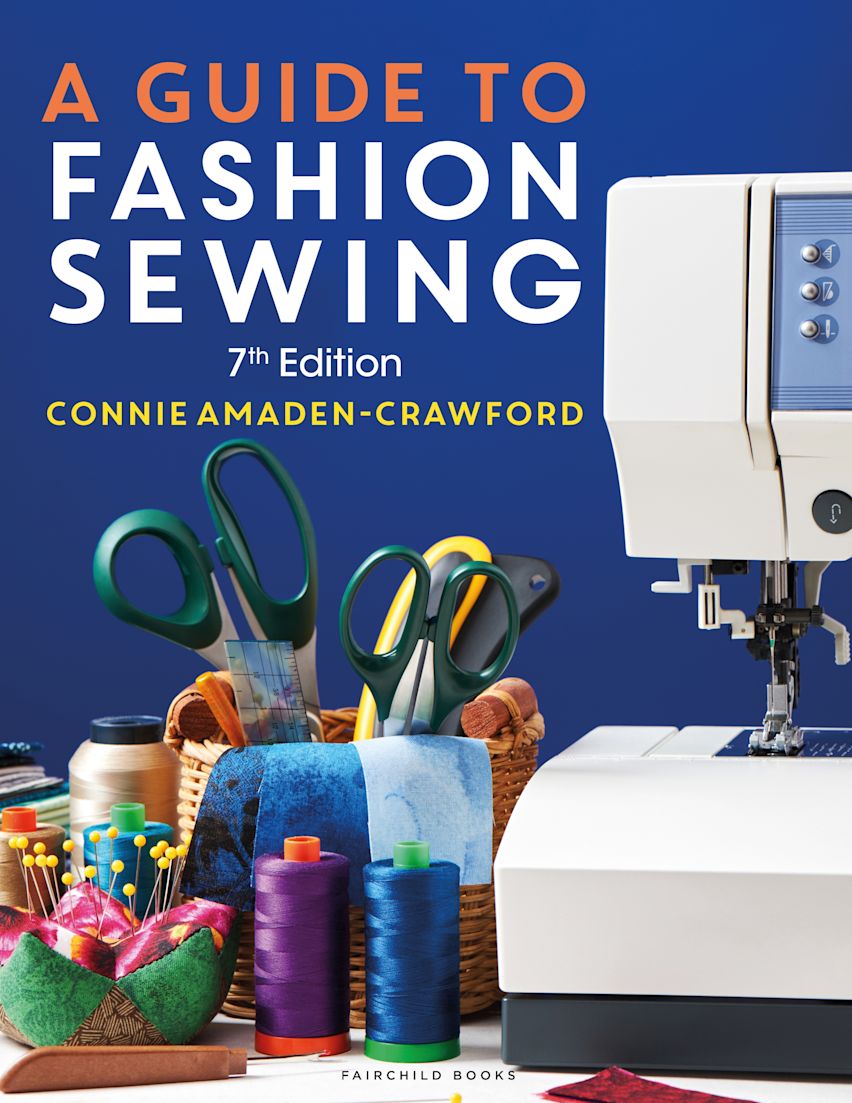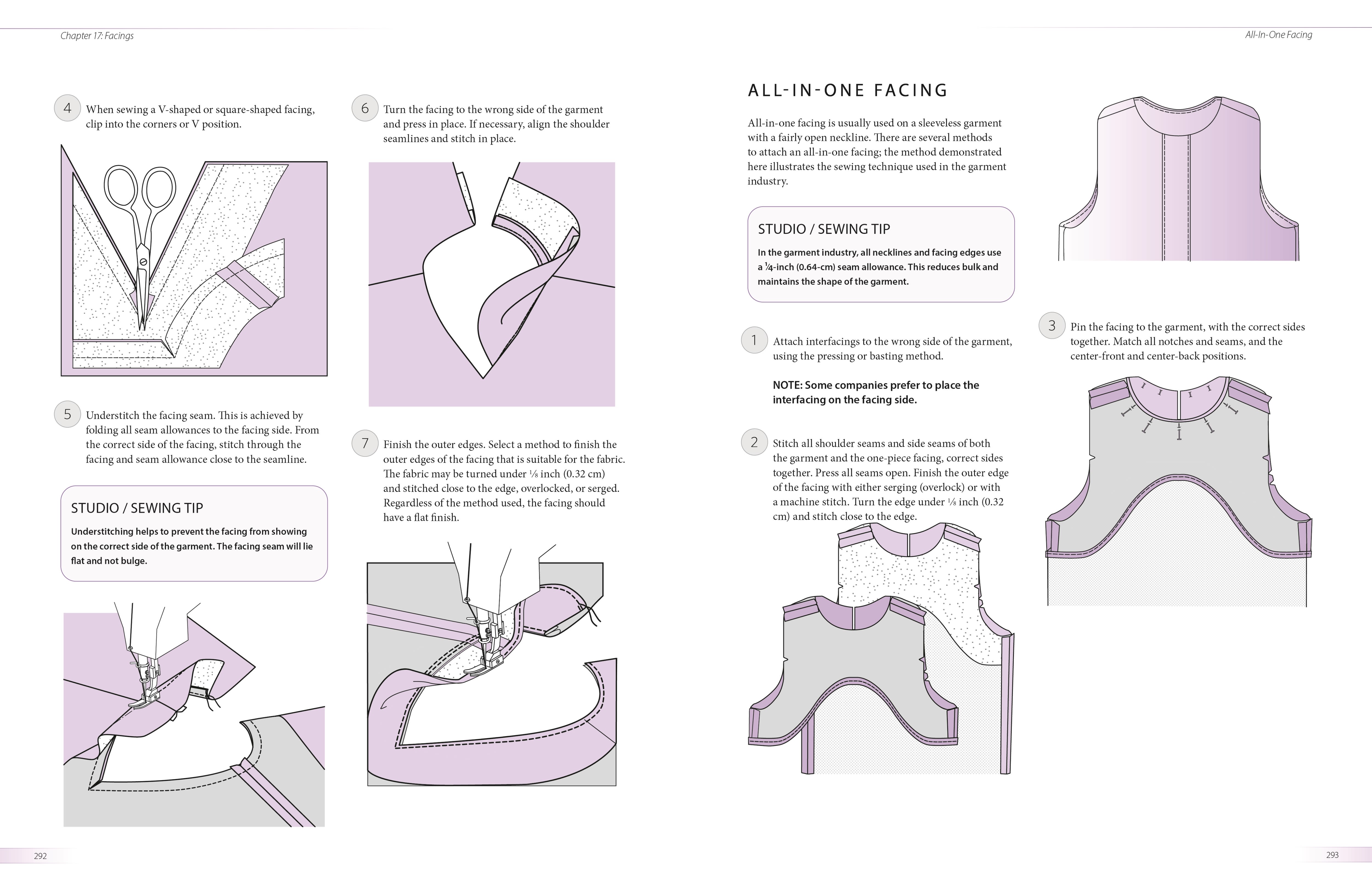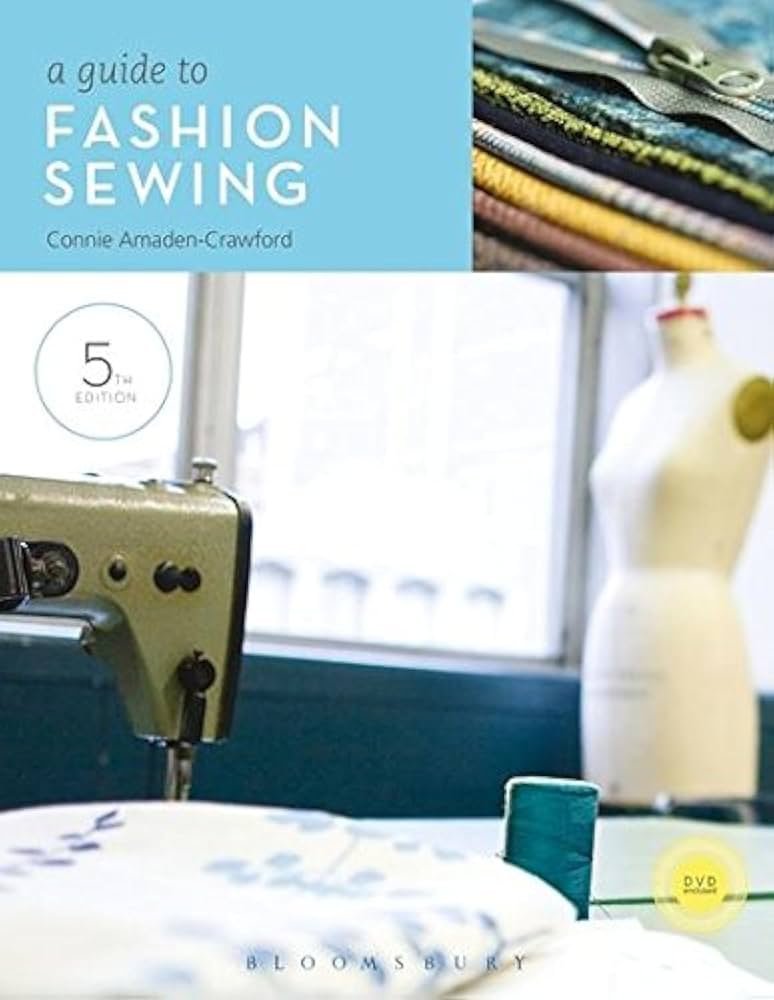“A Guide to Fashion Sewing” is an essential resource for both beginners and experienced sewers. It covers fundamental techniques and advanced skills.
This comprehensive book provides clear instructions and practical tips for creating beautiful garments. It covers everything from basic stitches to complex patterns. The step-by-step guides make learning easy and enjoyable. Readers will find detailed explanations of various fabrics, tools, and sewing machines.
The book also includes helpful illustrations and photographs. Each chapter builds on the previous one, ensuring a solid foundation in fashion sewing. Whether you are a novice or a seasoned sewer, this guide will enhance your skills and inspire creativity. It is a must-have for anyone passionate about fashion sewing.

Introduction To Fashion Sewing
Welcome to the world of fashion sewing! Whether you’re a beginner or an experienced tailor, “A Guide to Fashion Sewing Book” is your ultimate companion. This guide will help you master sewing techniques and create stunning garments.
The Importance Of Sewing Skills
Sewing skills are essential for anyone interested in fashion. Knowing how to sew can save money and offer creative freedom. With these skills, you can customize your wardrobe to your taste. You can also repair clothes, adding years to their lifespan. Learning to sew is also a great way to reduce waste and promote sustainability.
Overview Of The Guide
“A Guide to Fashion Sewing Book” covers everything you need to know. The book starts with the basics, like understanding your sewing machine. It then moves on to more advanced techniques, such as pattern making and garment construction. The guide includes:
- Step-by-step instructions
- Detailed illustrations
- Tips and tricks from experts
- Projects for all skill levels
Each chapter is designed to build your confidence and skills progressively. By the end of the book, you’ll be able to create professional-quality clothing.

Essential Sewing Tools
Whether you are a beginner or a pro, having the right sewing tools is crucial. In this section, we will explore the essential sewing tools you need. We will cover both basic and advanced tools to help you in your sewing journey.
Basic Sewing Kit
A basic sewing kit is a must-have for every sewing enthusiast. These are the tools you need to get started:
- Needles: Different sizes for various fabrics.
- Thread: Multiple colors to match your projects.
- Scissors: Sharp ones for cutting fabric and small ones for snipping threads.
- Measuring Tape: For accurate measurements.
- Pins and Pin Cushion: To hold fabric in place.
- Seam Ripper: For removing stitches easily.
Advanced Tools For Professionals
For those who have advanced skills, these tools are essential:
| Tool | Description |
|---|---|
| Rotary Cutter | For precise fabric cutting. |
| Fabric Weights | To hold patterns in place. |
| Tailor’s Chalk | For marking fabric. |
| Dress Form | For fitting and draping fabric. |
| Walking Foot | For sewing multiple layers. |
Having the right tools can make sewing easier and more enjoyable. Invest in these tools to enhance your sewing experience.
Fabric Fundamentals
Welcome to the world of sewing with our guidebook, “A Guide to Fashion Sewing.” This section, Fabric Fundamentals, is essential for every sewing enthusiast. Understand the basics of fabrics to make better choices for your projects.
Types Of Fabrics
Fabrics come in various types, each with unique characteristics. Here are some common types:
- Cotton: Soft, breathable, and easy to work with.
- Silk: Luxurious, smooth, and has a natural sheen.
- Wool: Warm, durable, and ideal for winter garments.
- Linen: Light, breathable, and perfect for summer wear.
- Polyester: Strong, wrinkle-resistant, and versatile.
Choosing The Right Fabric
Choosing the right fabric is crucial for your sewing projects. Consider these factors:
| Factor | Description |
|---|---|
| Purpose | Think about what you are making. Is it a dress, a coat, or a quilt? |
| Season | Choose light fabrics for summer and heavier ones for winter. |
| Experience Level | Beginners should choose easy-to-sew fabrics like cotton. |
| Care Instructions | Check if the fabric needs special care like dry cleaning. |
| Budget | Consider your budget. Some fabrics are more expensive than others. |
Here are some tips for choosing the right fabric:
- Feel the fabric and check its texture.
- Hold the fabric up to the light to check its transparency.
- Test the fabric’s stretch by pulling it gently.
- Check the fabric’s drape by letting it fall naturally.
Understanding fabric fundamentals helps you create beautiful garments. Happy sewing!

Mastering Basic Stitches
Understanding the basic stitches is crucial for any sewing project. This section of A Guide to Fashion Sewing Book will help you master these essential skills. Both hand and machine stitches are covered, giving you a solid foundation.
Hand Stitches
Hand stitches are useful for delicate fabrics and detailed work. Here are some essential hand stitches:
- Running Stitch: A simple stitch for seams and gathering fabric.
- Backstitch: Provides a strong and durable seam.
- Overcast Stitch: Prevents fabric edges from fraying.
- Slip Stitch: Invisible from the front, ideal for hems.
Practice these stitches on scrap fabric to perfect your technique.
Machine Stitches
Machine stitches make sewing faster and more efficient. Here are some key machine stitches:
| Stitch | Use |
|---|---|
| Straight Stitch | Most common stitch, used for seams. |
| Zigzag Stitch | Prevents fabric edges from fraying. |
| Buttonhole Stitch | Makes perfect buttonholes. |
| Blind Hem Stitch | Creates an invisible hem. |
Adjust the stitch length and tension for different fabrics. Refer to your machine’s manual for settings.
Advanced Stitching Techniques
Welcome to the advanced world of fashion sewing! In this section, we’ll dive into Advanced Stitching Techniques. These techniques will elevate your sewing projects to a professional level.
Decorative Stitches
Decorative stitches add flair to your garments. They are perfect for embellishing hems, collars, and cuffs. These stitches can be simple or intricate, based on your design.
- Satin Stitch: Ideal for creating a smooth, shiny finish.
- Feather Stitch: Adds a playful, whimsical touch.
- Cross Stitch: Gives a classic, hand-sewn look.
Use a variety of threads for different textures and effects. Match the thread color to your fabric or choose a contrasting color for a bold statement. Practice on scrap fabric to perfect your technique.
Seam Finishing
Seam finishing is crucial for a professional look. It prevents fraying and extends the life of your garment. Here are some popular seam finishing techniques:
- French Seam: Encloses raw edges within the seam. Perfect for delicate fabrics.
- Overlock Stitch: Used with a serger to trim and finish edges simultaneously.
- Flat-Felled Seam: Creates a strong, durable seam. Commonly used in jeans.
Choosing the right seam finish depends on your fabric and garment type. Test different finishes on scraps to see which works best. Proper seam finishing will make your garments last longer and look professional.
| Technique | Best For | Tools Needed |
|---|---|---|
| French Seam | Delicate Fabrics | Standard Sewing Machine |
| Overlock Stitch | All Fabric Types | Serger |
| Flat-Felled Seam | Heavy Fabrics | Standard Sewing Machine |
Pattern Making And Alterations
Understanding pattern making and alterations is key for any fashion enthusiast. These skills allow you to create custom clothing that fits perfectly. This section of “A Guide to Fashion Sewing Book” covers everything you need to know.
Creating Patterns
Creating patterns is the first step in making clothes. You can use existing garments or start from scratch. The book provides detailed instructions for both methods.
The basic tools for pattern making include:
- Measuring tape
- Pattern paper
- Pencils
- Rulers
- Scissors
Follow these steps to create a basic pattern:
- Take accurate measurements.
- Draw the basic shapes on paper.
- Cut out your pattern pieces.
- Label each piece for easy assembly.
Adjusting Fit
Adjusting the fit ensures that your clothes look and feel great. The book offers tips for common alterations like shortening sleeves or taking in the waist.
Here are some common fit adjustments:
| Adjustment | Description |
|---|---|
| Shortening | Reducing the length of sleeves or hems. |
| Taking In | Making a garment smaller around the waist or hips. |
| Letting Out | Making a garment bigger around the waist or hips. |
Use these steps to adjust fit:
- Try on the garment.
- Mark areas that need changes.
- Pin and sew the adjustments.
- Try on the garment again to check the fit.
These skills are essential for making custom clothes that fit perfectly. “A Guide to Fashion Sewing Book” makes learning easy and fun.
Project Ideas
Looking for creative ways to use your fashion sewing book? Our ‘Project Ideas’ section is here to inspire you. Whether you’re a beginner or an advanced sewer, you’ll find something exciting to create. Let’s dive into some fantastic project ideas that will hone your skills and spark your creativity.
Beginner Projects
Just starting with fashion sewing? No worries! These beginner projects are simple and fun.
- Tote Bags: Tote bags are perfect for beginners. They require basic stitching skills.
- Aprons: Aprons are another easy project. They help you practice straight seams.
- Pillowcases: Pillowcases are a great way to practice different fabrics and patterns.
Each project helps you learn essential sewing techniques. Plus, you end up with something useful!
Advanced Projects
Ready to take your sewing skills to the next level? These advanced projects will challenge you.
- Dressmaking: Make a custom dress. This involves pattern making and fitting.
- Blazers: Blazers require precision and attention to detail. They are perfect for honing your skills.
- Tailored Pants: Tailored pants involve more advanced techniques. They are great for perfecting your sewing.
These projects are more complex but incredibly rewarding. You’ll learn advanced techniques and create beautiful garments.
| Project | Skill Level | Learning Outcome |
|---|---|---|
| Tote Bags | Beginner | Basic stitching skills |
| Aprons | Beginner | Straight seams |
| Pillowcases | Beginner | Different fabrics and patterns |
| Dressmaking | Advanced | Pattern making and fitting |
| Blazers | Advanced | Precision and detail |
| Tailored Pants | Advanced | Advanced techniques |
Troubleshooting Common Issues
Even the most experienced sewists face challenges. In this section, we’ll guide you through troubleshooting common issues you might encounter while sewing. From fixing mistakes to maintaining your sewing machine, we’ve got you covered.
Fixing Mistakes
Everyone makes mistakes. Here’s how you can fix them:
- Seam Ripper: Use a seam ripper to carefully undo stitches. Avoid tearing the fabric.
- Re-stitching: After removing the mistake, re-stitch the seam. Ensure the thread matches.
- Fabric Patching: If there’s a hole, patch it with a small piece of fabric. Use matching material.
For more complex mistakes, consider these steps:
- Identify the error and determine the best fix.
- Always test fixes on a scrap piece of fabric first.
- Take your time to ensure the repair is clean and professional.
Maintaining Your Sewing Machine
A well-maintained sewing machine lasts longer and works better. Follow these tips:
- Regular Cleaning: Clean your machine after every project. Remove lint and dust with a brush.
- Oil the Machine: Check your manual. Some machines need regular oiling.
- Replace Needles: Use a new needle for each project. Dull needles can damage fabric.
Here’s a quick maintenance checklist:
| Task | Frequency |
|---|---|
| Cleaning | After every project |
| Oiling | As per manual |
| Needle Replacement | Every project |
Make sure to follow these steps for a smooth sewing experience. Your machine will thank you!
Resources And Inspiration
Finding the right resources and inspiration is crucial for fashion sewing enthusiasts. This section will guide you through some of the best resources to help you on your sewing journey. You’ll find recommendations for books, online communities, and more to fuel your creativity.
Recommended Books
Books can be a treasure trove of knowledge and inspiration. Here are a few must-have books for every fashion sewing enthusiast:
- “The Sewing Book” by Alison Smith: Comprehensive guide with step-by-step instructions.
- “Patternmaking for Fashion Design” by Helen Joseph-Armstrong: Essential for learning patternmaking.
- “Couture Sewing Techniques” by Claire B. Shaeffer: Perfect for mastering couture techniques.
- “The Complete Serger Handbook” by Chris James: Great for serger machine tips and tricks.
Online Communities
Joining online communities can provide valuable support and inspiration. Here are some popular online communities for fashion sewing:
| Community | Description |
|---|---|
| PatternReview | A forum for sharing patterns, reviews, and tips. |
| Sewing Subreddit | A Reddit community with discussions and project shares. |
| The Fold Line | Online hub for patterns, tutorials, and inspiration. |
| Instagram Hashtags | Follow hashtags like #sewingcommunity and #memadewardrobe for ideas. |
Engaging with these communities can provide endless inspiration and support. Whether you’re a beginner or an expert, these resources will enhance your sewing journey.
Frequently Asked Questions
What Is A Fashion Sewing Book?
A fashion sewing book provides comprehensive instructions on sewing techniques and garment construction. It’s ideal for beginners and experts.
How Can I Start Sewing Clothes?
Start by choosing a sewing pattern and fabric. Follow step-by-step instructions in a fashion sewing book.
What Tools Are Needed For Fashion Sewing?
Essential tools include a sewing machine, fabric scissors, pins, measuring tape, and a seam ripper.
How Do I Choose The Right Fabric?
Choose fabric based on the sewing pattern’s recommendations. Consider fabric weight, drape, and suitability for the project.
Conclusion
Mastering fashion sewing can unlock endless creative possibilities. This guide provides essential tips and techniques for success. Whether you’re a beginner or seasoned seamstress, this book offers valuable insights. Start your sewing journey now and transform your fashion ideas into reality.
Happy sewing!
